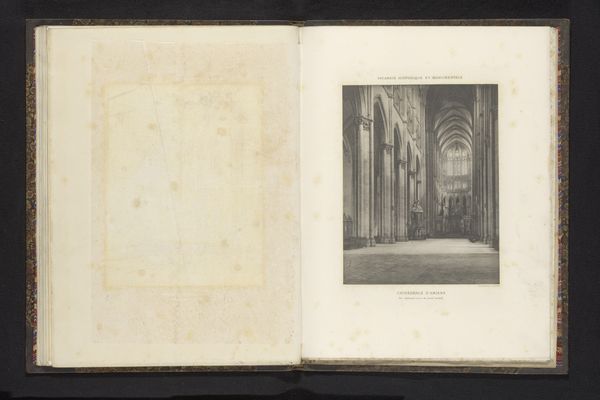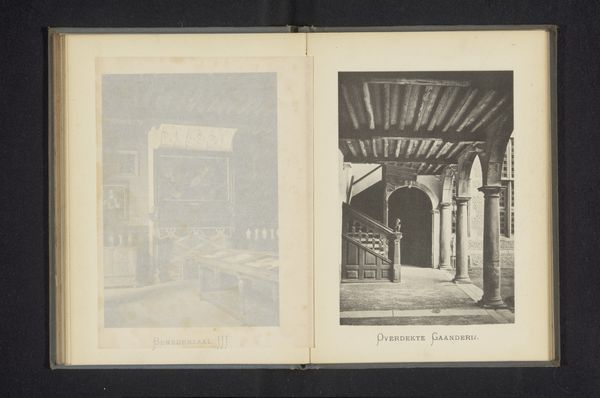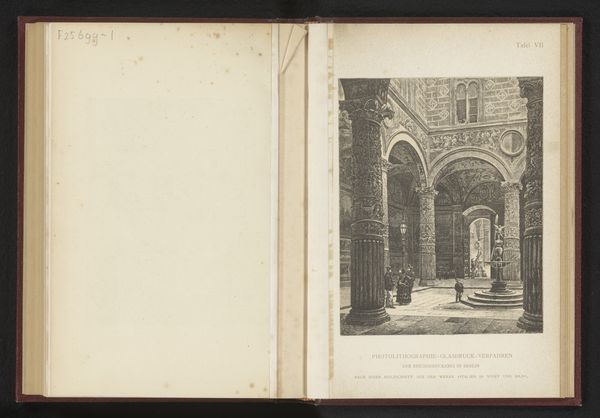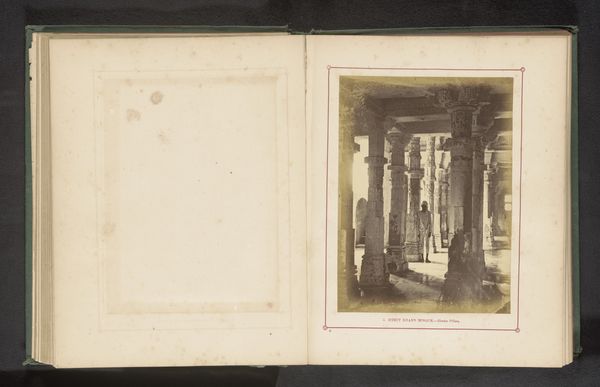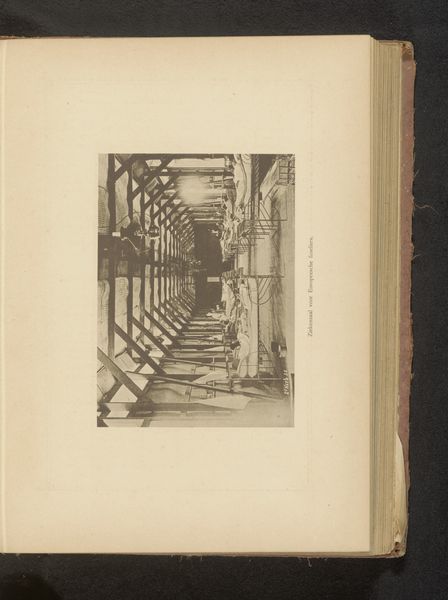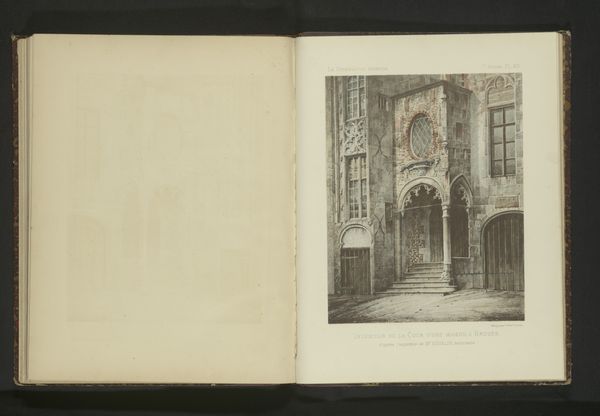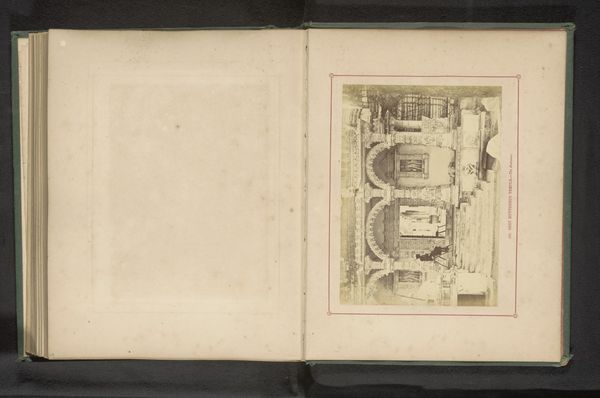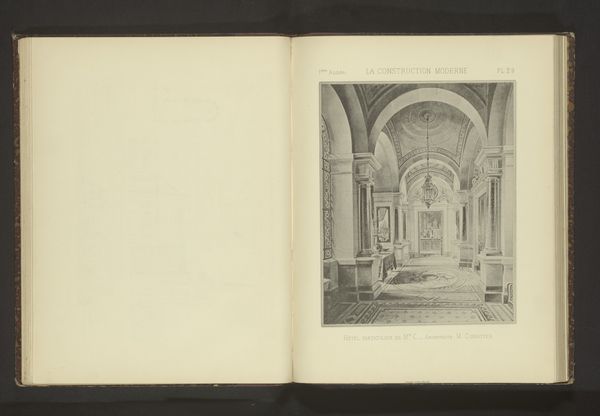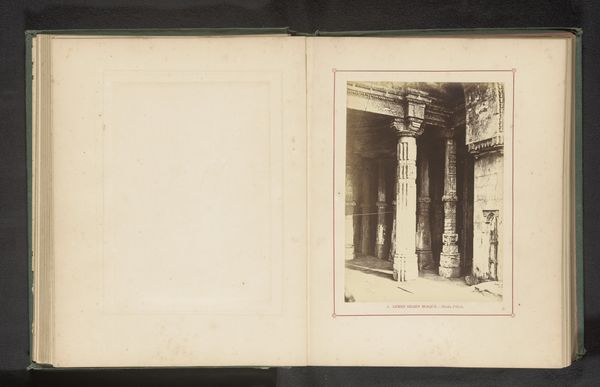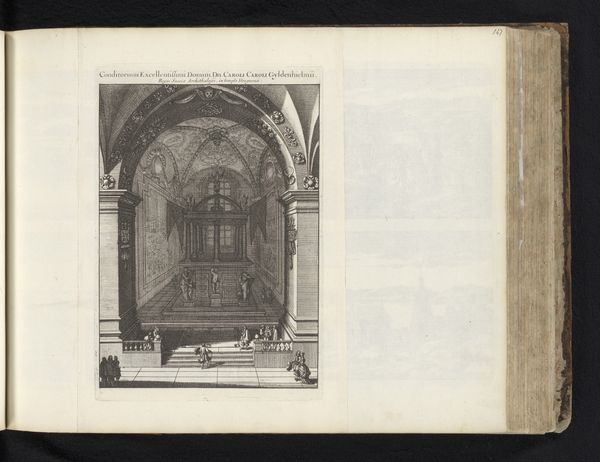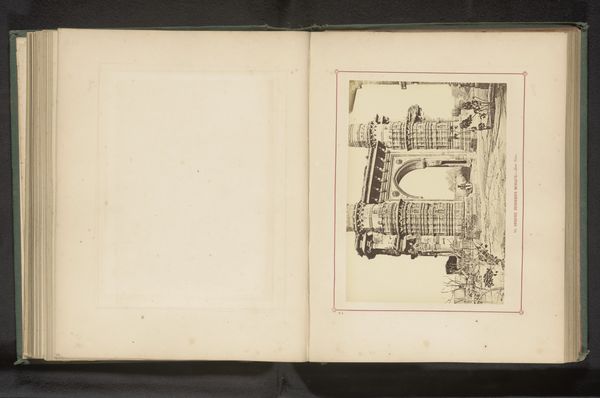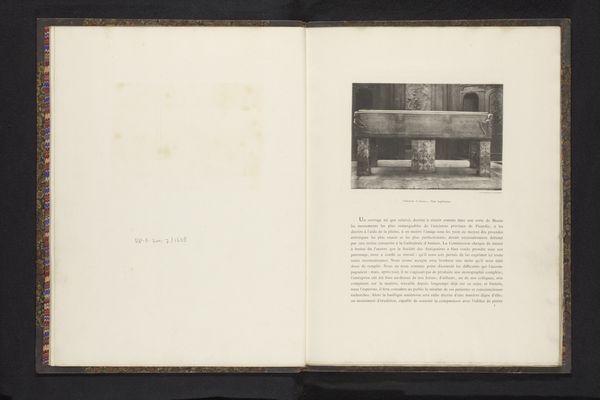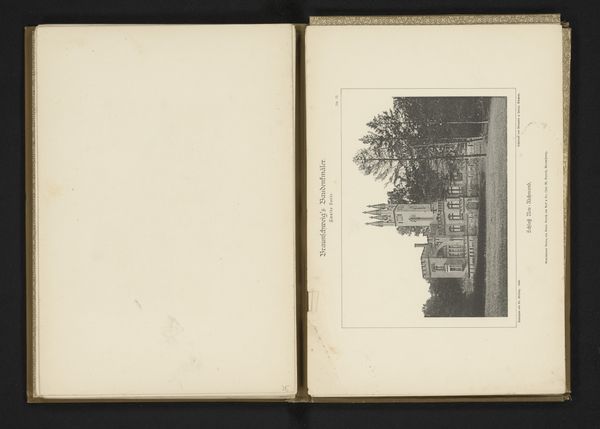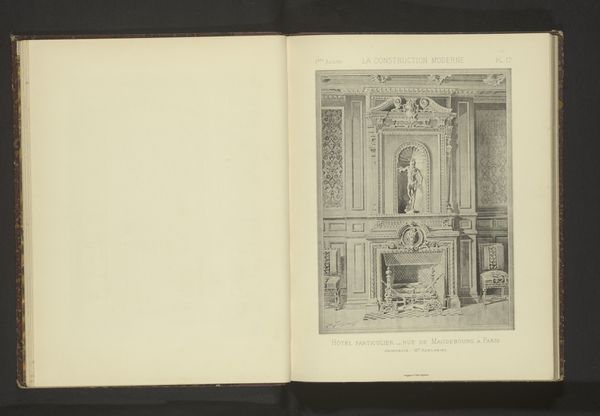
print, photography
# print
#
landscape
#
photography
#
islamic-art
#
realism
Dimensions: height 153 mm, width 109 mm
Copyright: Rijks Museum: Open Domain
Curator: Here we have “Interior of the Alhambra," an intriguing print, created through photography by Johann Baptist Obernetter, dating to before 1890. Editor: It has such a stark, geometric beauty. The contrast of light and shadow emphasizes the depth of the corridor, punctuated by the rigid order of those columns. It feels both grand and strangely intimate. Curator: The Alhambra in Granada held immense significance. After the Christian Reconquista of Spain, its Islamic architectural elements became contested spaces. Photographic prints like these served to document and often exoticize a declining Moorish culture. The publication context would reveal much. Editor: Right, context matters. But independent of any social framing, I am simply drawn to the tonal variations within the grey scales. The way light bounces and shifts the perceived volume of each pillar. And see the detailed inscriptions cascading along the walls. How might you read those? Curator: Precisely! As sites of symbolic power. Inscriptions quoting the Quran reinforce religious legitimacy, while architectural style evokes lost empires. Images like this weren't neutral. They aided in reshaping the public understanding and Western dominance over the region and its narratives. The photographic reproduction helped frame and, therefore, control it. Editor: But what of Obernetter himself? This isn't a simple snapshot, more a study in architectural lines and light, almost abstracting its subject, even though rendered photographically. It goes beyond mere documentation; it’s compositionally astute, a creative interpretation. Curator: True, Obernetter's vision informs our own. These images gained popularity as they circulated in albums of the period, catering to Europe's rising fascination with the Orient. We see this appropriation in so many other areas. Editor: This one work gives me an insight, formal, historic and, I think, powerful, into this famous building. Curator: Absolutely, from photographic technique, its circulation, to the site’s cultural identity—it tells numerous overlapping stories.
Comments
No comments
Be the first to comment and join the conversation on the ultimate creative platform.
